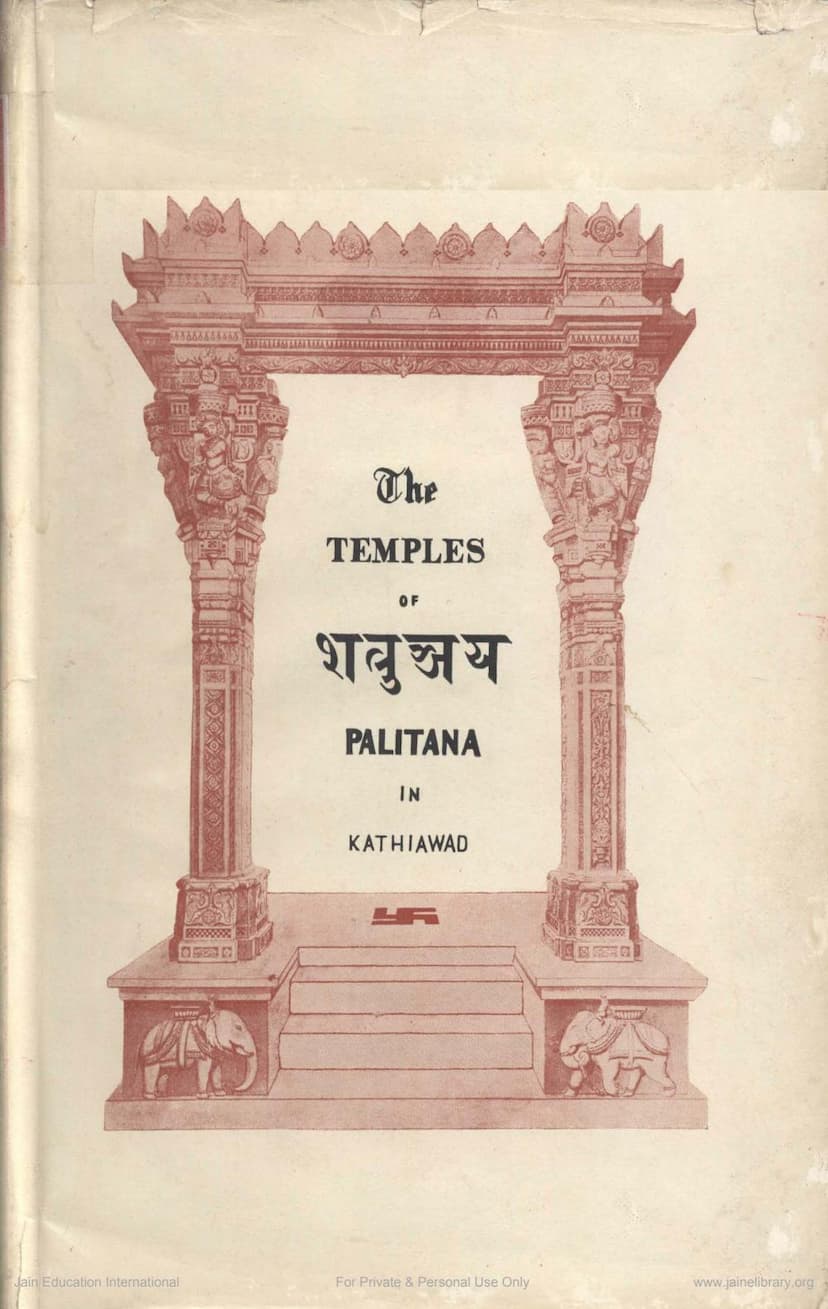Temple Of Satrunjaya
Added to library: September 2, 2025
Loading image...

Summary
This document is a revised edition of "The Temples of Satrunjaya" by James Burgess, published by Jain Bhawan Publication in April 1977. The book is a detailed historical and descriptive account of the Jaina pilgrimage site of Satrunjaya, located near Palitana in Kathiawad.
Key aspects covered in the book include:
- Historical Context: The book places Satrunjaya within the broader historical and cultural landscape of Gujarat, referencing ancient kingdoms, prominent rulers, and the historical significance of the region. It also touches upon the origins and doctrines of Jainism, its relationship with Buddhism, and the historical presence of Jainism in India.
- James Burgess's Work: The foreword highlights James Burgess's pioneering work in Indian archaeology, particularly his detailed photographic surveys and historical introductions to important Indian monuments. The revised edition aims to make his valuable research more accessible.
- Jaina Philosophy and Practices: The text delves into Jaina theology, including the concept of Tirthankaras (Jinas), their lives, and characteristics. It also describes the rituals, ceremonies, festivals, sects (Digambara and Svetambara), and the roles of ascetics (Yatis) and lay followers (Sravakas).
- The Mountain of Satrunjaya: The book describes Satrunjaya as a sacred mountain, revered from ancient times and associated with the first Tirthankara, Rishabhanatha. Its name signifies a victory over sin. The text details the numerous temples adorning the mountain's summits, which are described as a "city of temples."
- Architectural Description: A significant portion of the book is dedicated to describing the various temples and enclosures (tuks) on Satrunjaya. It provides detailed accounts of the architecture, construction styles, materials used, and the sculptures and images found within. The Caumukh Temple is described in detail as a representative example of the larger temples.
- Historical Development and Patronage: The book traces the history of temple construction and restoration on Satrunjaya, mentioning the patronage of various kings, merchants, and wealthy individuals from different periods. It highlights significant patrons like Kumarapala, Hemacandra, and wealthy merchants like Sava Somji, Motisah Amichand, and Hemabhai Vakhatchand.
- Legends and Myths: The text includes legends and myths associated with Satrunjaya and the Jinas, as recorded in the "Satrunjaya Mahatmya." These legends often interweave historical narratives with mythological accounts.
- Photographic Documentation: The book is enriched by photographs (referred to as "Plates") that visually document the temples and various aspects of the pilgrimage site. These photographs, originally taken by Sykes and Dwyer, are presented in a reduced dimension in this edition.
- Sectarian Differences: The book briefly touches upon the differences between the Digambara and Svetambara sects, including their distinct practices and temple decorations.
- Royal Patronage and Grants: It mentions historical grants and protections provided by Mughal emperors like Akbar and Shah Jahan, underscoring the historical recognition and respect afforded to the Jaina pilgrimage site.
In essence, "The Temples of Satrunjaya" is a comprehensive and scholarly work that serves as both a historical record and a guide to the religious and architectural significance of this important Jaina pilgrimage destination. It provides insights into Jaina history, beliefs, art, and the enduring legacy of its sacred sites.